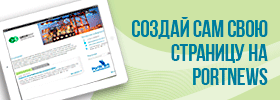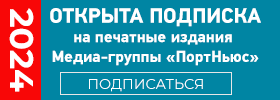Port of Rotterdam half-year cargo volumes rose 3,9%

With an increase in throughput of 3.9%, the port of Rotterdam can look back a good first half year. There was growth in eight of the ten market segments. The only falls were in the volumes of mineral oil products and other liquid bulk, the Port Authority press release said.
In particular, the volume of containers handled (9.3% in TEU, 10.4% in tonnes) was the determining factor for the overall growth in throughput. Dry bulk increased (5.2%), liquid bulk decreased slightly (-1.0%) and break bulk was very much on the rise (10.8%). A total of 238.0 million tonnes of goods were handled in the first half of the year.
The market share of Rotterdam by comparison with the other ports in the Hamburg-Le Havre range increased from 29.0% (Q1 2016) to 30.9% (Q1 2017) in the container sector.
Several companies announced major investments this half year, indicating business confidence in the Rotterdam port and industrial complex. Those investments consolidate the importance of the complex for the Dutch economy.
Sea port dues decreased by 0.4% (€0.6 million) to €146.0 million, while throughput increased by 3.9% because of a fall in some market segments of the average price per tonne due to the prevailing price structure. Income from contracts rose by 1.3% (€2.2 million) to €173.8 million.
‘Other operating income’ increased as a result of an accounting change and so revenue as a whole went up by €8.3 million to €342.3 million. To meet the corporation tax requirement effective 1-1-2017, 25% (€31.4 million) of the result has been earmarked, and profit after taxation is therefore €97.8 million. This is comparable with the result over the same period last year, when the interest rate swap was partially bought off for €32.0 million. The result is in line with expectations.
Ports in neighbouring countries receive considerably more support on a structural basis from their national governments than their Dutch counterparts. For example, there are now plans in Germany to halve the tariffs for rail transport, Dutch ports are the only ports that the European Commissioner requires to pay corporation tax, and the European limit for state aid has been raised to €150 million. In view of the importance of the port of Rotterdam and the challenges facing the port and industrial complex, support is needed that is comparable to neighbouring countries.
Dry Bulk
The volume of ore and scrap increased by 1.9% due to a slight rise in German steel production. This suggests that the measures taken by the European Union against the dumping of steel on the European market are starting to bear fruit. The throughput of coal increased by 9.8%. In particular, more coal for power stations arrived and stocks on the terminals increased.
The volume of agricultural bulk went up by 7.7%. The two main reasons were that more maize arrived as a feedstock for the production of biofuels and that more soya beans were imported, particularly for the animal feed industry. The throughput of other dry bulk rose 1.5%. This market segment consists, among other things, of raw materials for the metal and chemical industries.
A total of 41.3 million tonnes of dry bulk were handled, 5.2% more than in the first half of 2016. The dry bulk accounts for 18% of total throughput in Rotterdam. Coal for power stations represents 3% of the total throughput.
Liquid Bulk
The volume of crude oil went up by 9.0%, reaching a record high of 54.9 million tonnes. This development was due to the low oil price, which allows the refineries to operate with large margins. The utilisation rates were therefore high during the past six months, both at the Rotterdam refineries and in Germany, Antwerp and Vlissingen, which receive their supplies of crude oil from Rotterdam. The throughput of mineral oil products fell by 8.5%, almost entirely as a result of a sharp decline in the amount of Russian fuel oil. Russia has introduced a tax on the export of fuel oil that encourages the refineries to modernise and therefore to produce less fuel oil. Just over a quarter of the volume of mineral oil products currently consists of Russian fuel oil, which is often exported via Rotterdam to Singapore. The volume of LNG increased by 2.0%. The category of other liquid bulk declined by 11.7%. This was the outcome of a number of different developments, such as a fall in chemical products and a rise in biofuels. A total of 111.8 million tonnes of dry bulk were handled, 1.0% more than in the first half of 2016. The wet bulk accounts for 47% of total throughput in Rotterdam.
Major investments are now being made in this market segment in Rotterdam. ExxonMobil, Shell and Gunvor are together putting about €2 billion into the modernisation of their refineries. A number of tank terminals are increasing or modernising their capacity. A new development this half year was the announcement by HES International that it will be building a tanker terminal on the Hartelstrook, with BP as a major customer. This means that BP will be concentrating its activities in Rotterdam. The location will be home to 52 tanks with a combined capacity of approximately 1.3 million m3. The Port of Rotterdam Authority will be building a quay measuring 1,100 metres here for seagoing vessels. There will be nine berths in the Hudson harbour for inland shipping.
AkzoNobel has announced that it will be investing in ‘zero gap technology’ for its chlorine production activities in the Botlek. This technology cuts energy consumption by up to 10%. Huntsman and Evides have decided to build a heat transfer pipeline to use residual heat from Huntsman.
Containers and Break Bulk
Container throughput developed very positively during the first six months, with an increase of 9.3% in TEU (the unit for containers) and 10.4% in tonnes. Total throughput was 6.7 million TEU, with a combined weight of 69.6 million tonnes. Rotterdam is growing faster in this market segment than surrounding ports. The productivity of the two terminals on Maasvlakte 2 has increased significantly, allowing them, with the terminals on Maasvlakte 1, to attract cargo from elsewhere. This is reflected in the new shipping schedules of the shipping alliances, which went into effect in April. Rotterdam has been frequently included in the schedules as the first or last port of call because vessels can arrive or leave here fully laden, which is not always the case in other ports. This development is related to the ongoing increases in scale in container shipping.
Given its location on the coastline and excellent infrastructure, Rotterdam is more easily accessible for the largest vessels than other ports. There was therefore a sharp increase in feeder traffic (22.6%), with intercontinental cargoes (deep sea: +6.3%) arriving in Rotterdam being taken to smaller ports in Northwest Europe and vice-versa. About one third of the ‘moves’ on the terminals involve these transshipment containers. The recovery of the European economy is reflected in the fact that export volumes increased slightly faster than imports during this half year. Short sea shipping rose by 9.7%. This is intra-European traffic. In particular, volumes to and from Scandinavia and the countries around the Baltic Sea increased. Transport to and from the United Kingdom has not yet been affected by the Brexit. Rotterdam’s market share in the container sector rose from 29.0% (Q1 2016) to 30.9% (Q1 2017) of ports in the Hamburg- Le Havre range. This is the highest market share in the past 15 years. At the end of June, the sector was shaken by a computer virus that shut down two terminals for several days. The incident indicates the importance of security for computer systems and networks, precisely now, when automation and digitalisation are becoming ever more important. It should be pointed out that this is true not only for the logistics sector but also for industry.
The FERM platform, that includes the Port of Rotterdam Authority, Deltalinqs, the municipality and the police, is working on raising awareness and sharing knowledge in this area. Alongside unremitting efforts to ensure that systems cannot be hacked, the biggest challenge facing the container sector is the optimisation of hinterland logistics: boosting the share of rail transport, particularly to and from Germany, the efficient handling of inland shipping and the digitalisation of logistical chains. Roll-on/roll-off traffic grew by 5.5% to 11.7 million tonnes. The number of destinations and frequency of services to Portugal, the United Kingdom, Scandinavia and Iceland increased. There was slightly more traffic to and from the UK. Other break bulk rose by no less than an 33.1% to 3.5 million tonnes. The main reason was the arrival of a large quantity of steel slabs from Brazil.
Rotterdam is one of the main ports of Europe. The port is the gateway to the European market of more than 350 million consumers. The port is one of the most important junctions of good flows of the world. The annual throughput is about 450 million tonnes.









